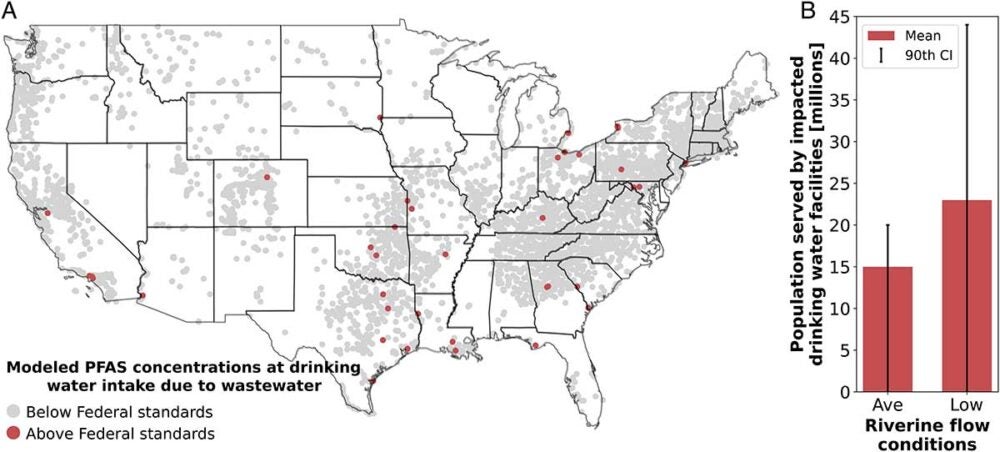Ruyle, et al.’s publication received wide press coverage, featured in The Hill, The New York Times, The Washington Post, and CNN.
New and highly-publicized research from former STEEP trainee Bridger Ruyle, PhD, and STEEP collaborators, analyzes organofluorines in discharged wastewater, a wide concern for the quality of downstream drinking water.
The study, published in PNAS (Proceedings of the National Academy of Sciences, USA), was conducted to better understand water-borne extractable organic fluorine, or EOF, an indicator of PFAS, pesticides, and pharmaceuticals, discharged from large, publicly owned treatment works (POTWs) in the US.
EOF was measured in wastewater inflow and outflow samples from eight large POTWs, each serving a population of more than 10,000, with similar treatment technologies and sizes as those serving 70% of the US population. The measurements were also evaluated with magnitudes of wastewater EOF released across the country, as well as the national-scale “de facto reuse incidence in our nation’s consumable supply” (DRINCS) model to understand impacts on downstream drinking water sources. Results were compared to fluorinated pharmaceutical prescription data from the US Department of Health and Human Services.
Overall results found that the six regulated PFAS, already linked with risks to human health, and another 18 PFAA measured, composed only a small fraction of EOF transport. Most EOF in inflow (75%) and outflow (62%) was found to consist of mono- and polyfluorinated pharmaceuticals.
This evidence suggests that POTWs do not effectively remove most EOF prior to discharge, regardless of the number or complexity of treatments. Maximum EOF removal efficiency among facilities was less than 25%; discharges from POTWs contained elevated levels of PFAS, including PFAA, PFAA precursors, and polyfluorinated pharmaceuticals.
Technology and size of the treatment facilities examined are similar to those serving 70% of the US population. A national model simulating connections between discharge and downstream drinking water predicted as many as 23 million Americans may be exposed to contamination levels that exceed regulation, from wastewater-derived PFAS alone.
Wastewater discharges permeate receiving water bodies, including downstream drinking water intakes, aquifers, surface waters, and the ocean. Research results emphasize the importance of further curbing ongoing PFAS production, as well as the need for evaluations of the fate and toxicity of fluorinated pharmaceuticals. Further research is needed to understand and mitigate upstream wastewater-derived sources and/or implement advanced drinking water treatment to prevent exposures to substances that pose risks to human health.
B.J. Ruyle, E.H. Pennoyer, S. Vojta, J. Becanova, M. Islam, T.F. Webster, W. Heiger-Bernays, R. Lohmann, P. Westerhoff, C.E. Schaefer, & E.M. Sunderland. High organofluorine concentrations in municipal wastewater affect downstream drinking water supplies for millions of Americans. PNAS (Proceedings of the National Academy of Sciences U.S.A.) 2025 122 (3) e2417156122.


